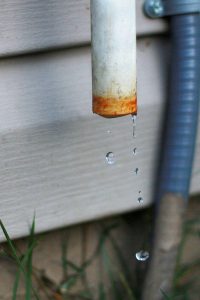With some simple modifications, this valuable byproduct can benefit your landscape and local wildlife.
Every drop of water counts, especially when temperatures soar in San Antonio. As our air conditioning units are working overtime to provide relief indoors, they’re also generating a valuable byproduct: Condensate.
Air conditioners function by removing moisture from the air. The resulting condensate is pure, like the water droplets that form on a glass of iced tea on a hot summer day.

This water typically drains away, dripping from a white PVC or copper pipe outside your home. But with some simple modifications, it can serve a purpose and benefit your landscape and local wildlife!
- If your outside A/C condensate drain line is high enough off the ground, set up a bucket or rain barrel to capture it. If it’s too low to the ground for a large vessel, redirect it through pipes into nearby garden beds.
- Alternatively, place a shallow pan or dish at the end of your A/C condensate drip line to create a simple source of hydration for feathered friends and other wildlife. With prolonged drought drying up many of our natural waterways, local birds can be drawn to the sound of a reliable drip, providing an opportunity for you to observe and appreciate the many species that call San Antonio home.
Whichever method you choose, use caution and make sure to never clog or block a condensate drain line. That could cause water to back up into your house. It’s always best to leave at least a 2-inch air gap between the collection unit and bottom of the outside pipe so it can drip freely.
Harnessing A/C condensate is an ingenious way to repurpose otherwise wasted water to benefit plants and birds. By embracing this eco-friendly approach, you can make a positive impact on the environment — and create a much-needed oasis amidst the Texas heat.




